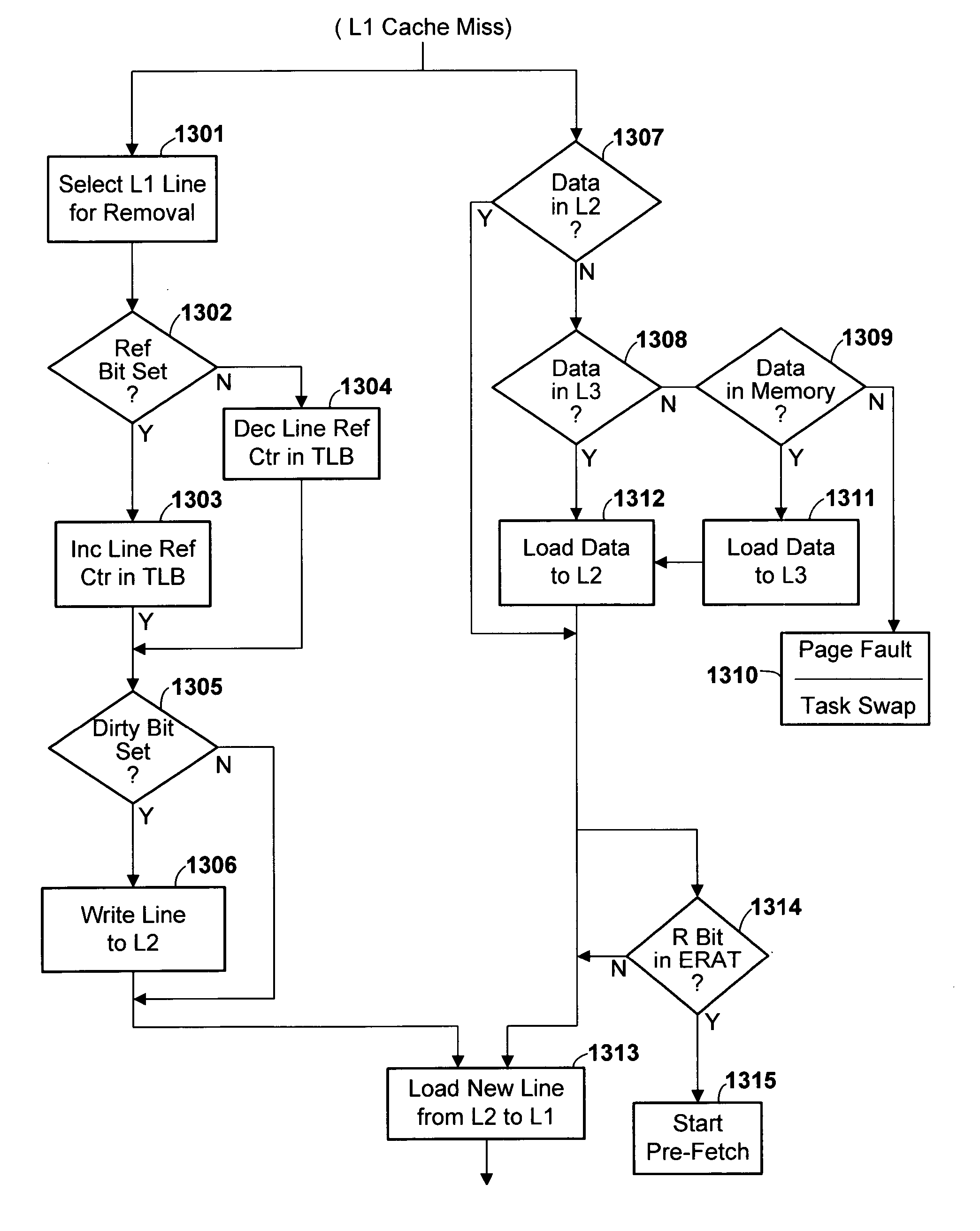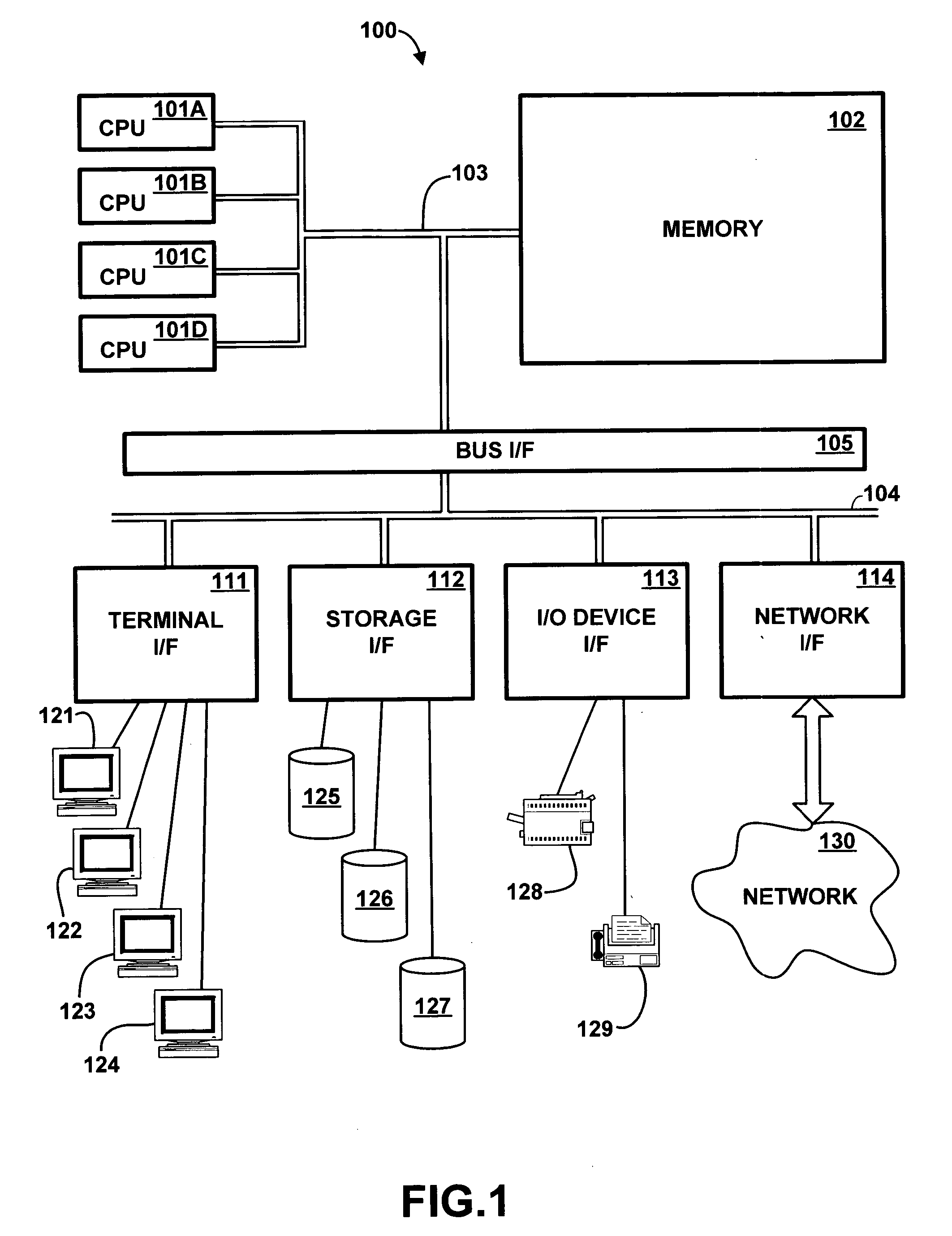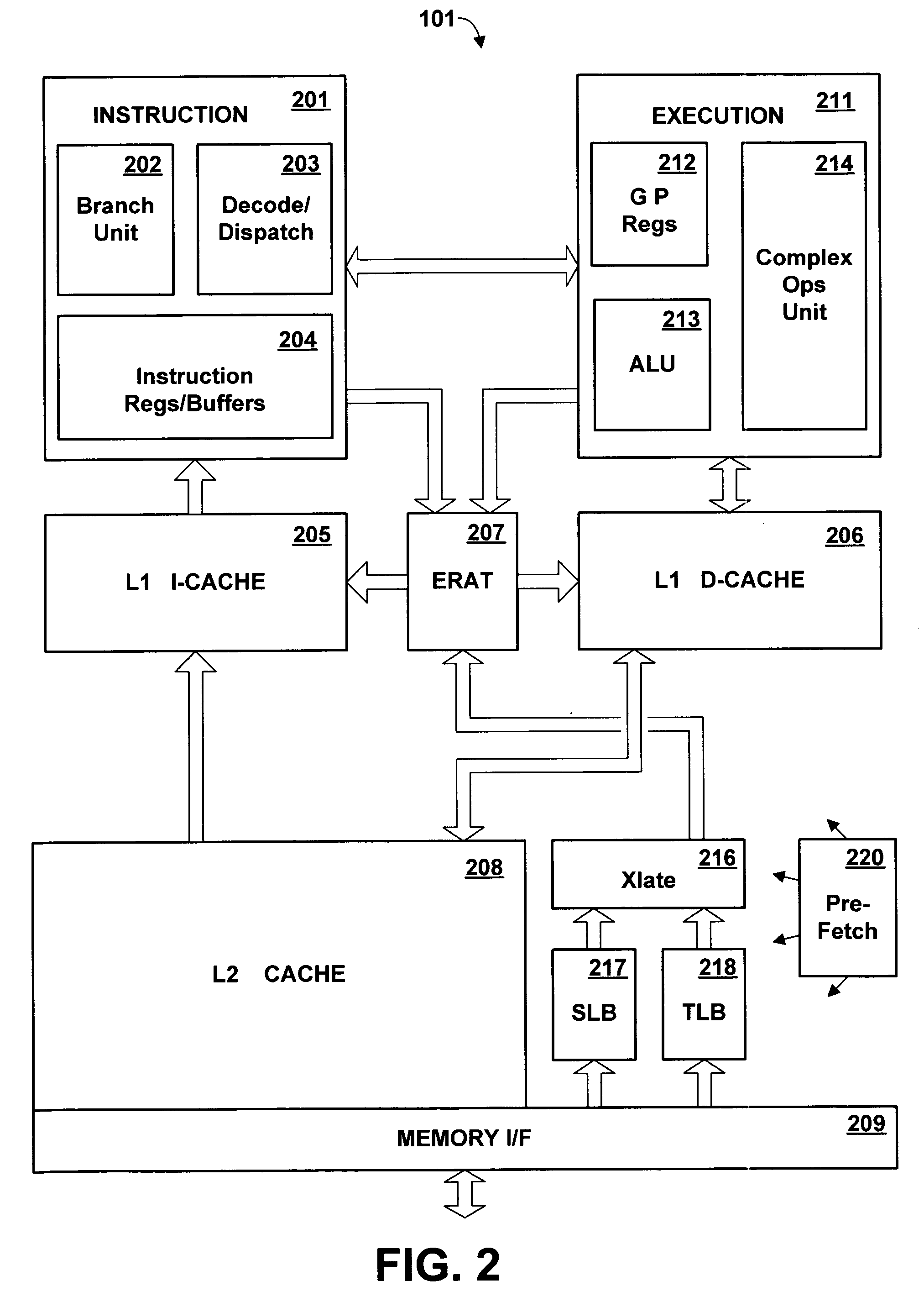Apparatus and method for pre-fetching data to cached memory using persistent historical page table data
a cache memory and historical page table technology, applied in the field of digital data processing hardware, can solve the problems of affecting the accuracy of predictive pre-fetching, the frequency of cache mises and and the difficulty of achieving the effect of reducing the frequency of cache mises and the resultant idle time of the processor
- Summary
- Abstract
- Description
- Claims
- Application Information
AI Technical Summary
Benefits of technology
Problems solved by technology
Method used
Image
Examples
Embodiment Construction
[0040] Referring to the Drawing, wherein like numbers denote like parts throughout the several views, FIG. 1 is a high-level representation of the major hardware components of a computer system 100 utilizing cache pre-fetching based on persistent historical page table data, according to the preferred embodiment of the present invention. The major components of computer system 100 include one or more central processing units (CPU) 101A-101D, main memory 102, terminal interface 111, storage interface 112, I / O device interface 113, and communications / network interfaces 114, all of which are coupled for inter-component communication via buses 103, 104 and bus interface 105.
[0041] System 100 contains one or more general-purpose programmable central processing units (CPUs) 101A-101D, herein generically referred to as feature 101. In the preferred embodiment, system 100 contains multiple processors typical of a relatively large system; however, system 100 could alternatively be a single C...
PUM
 Login to View More
Login to View More Abstract
Description
Claims
Application Information
 Login to View More
Login to View More - R&D
- Intellectual Property
- Life Sciences
- Materials
- Tech Scout
- Unparalleled Data Quality
- Higher Quality Content
- 60% Fewer Hallucinations
Browse by: Latest US Patents, China's latest patents, Technical Efficacy Thesaurus, Application Domain, Technology Topic, Popular Technical Reports.
© 2025 PatSnap. All rights reserved.Legal|Privacy policy|Modern Slavery Act Transparency Statement|Sitemap|About US| Contact US: help@patsnap.com



